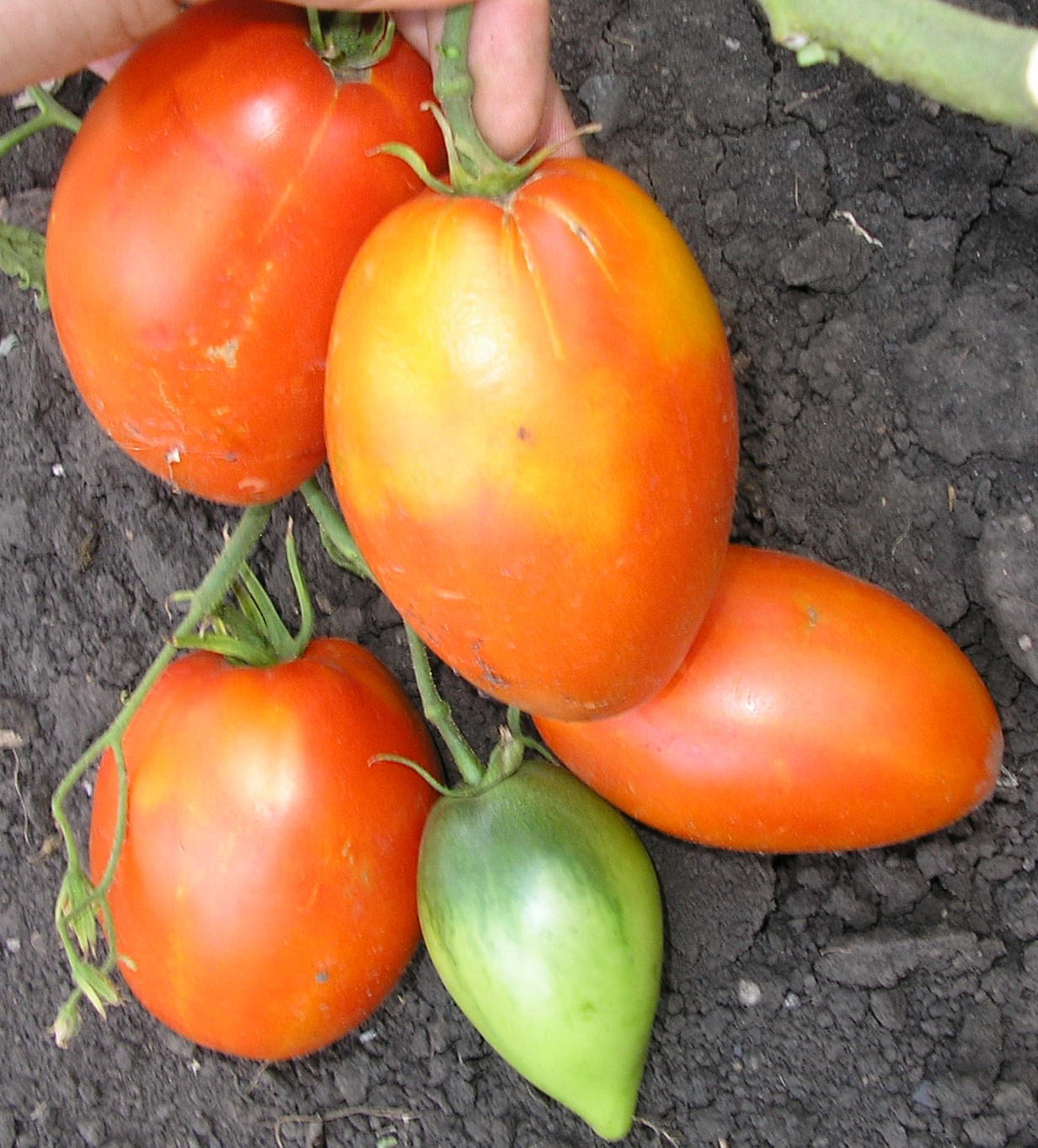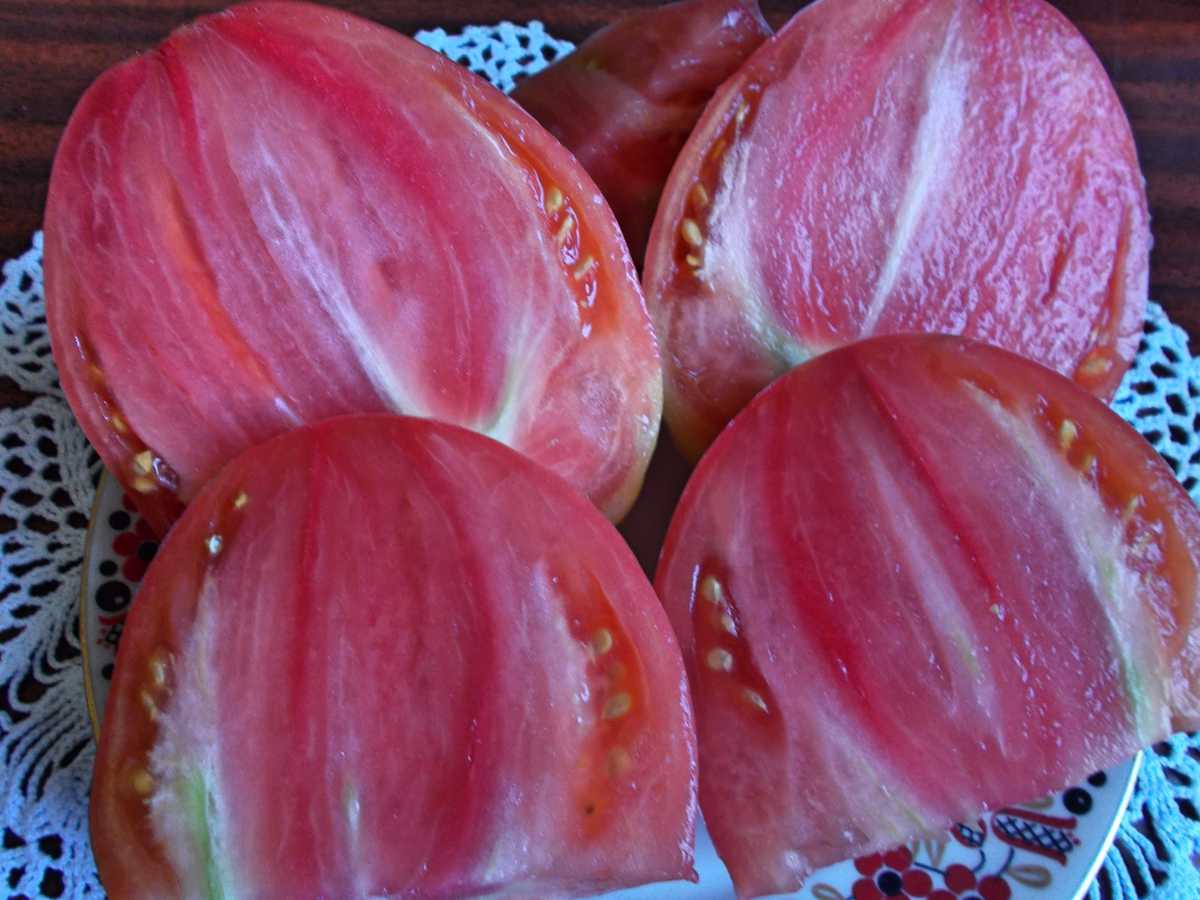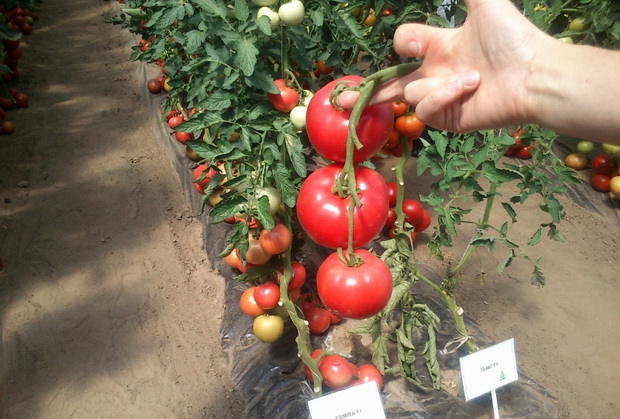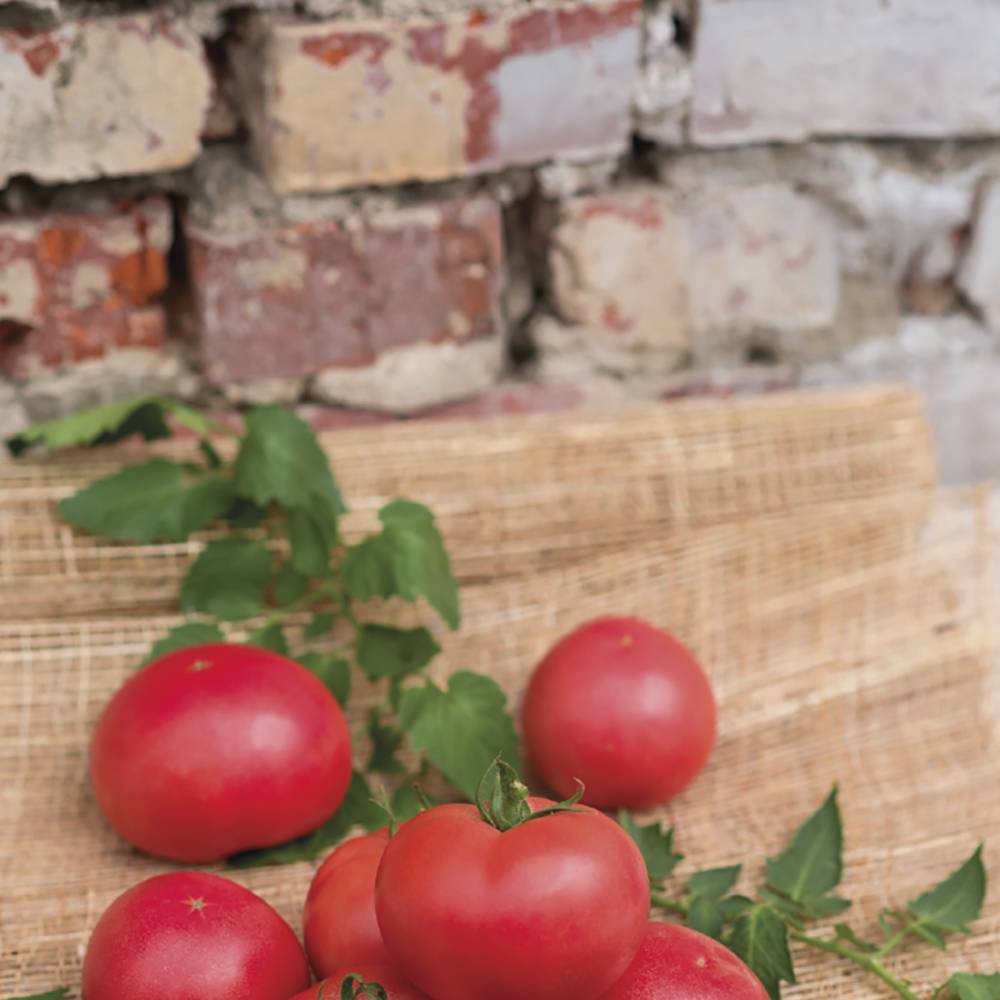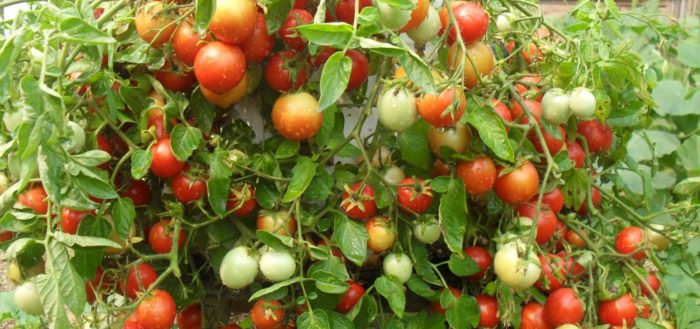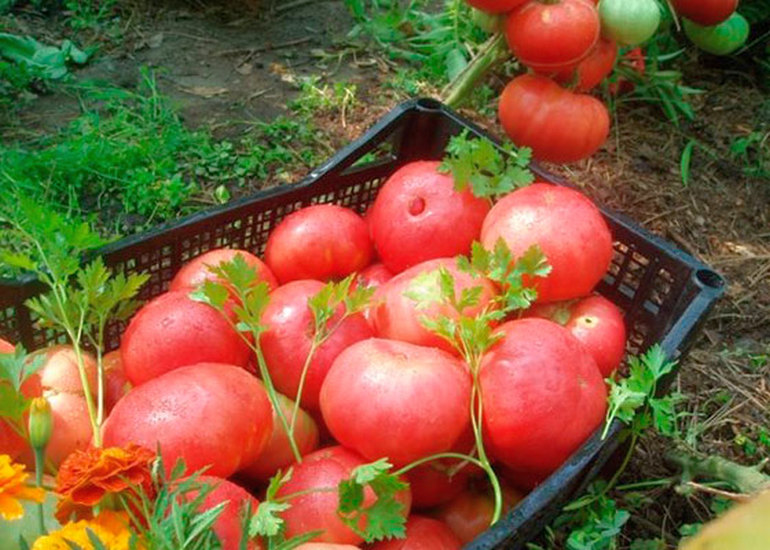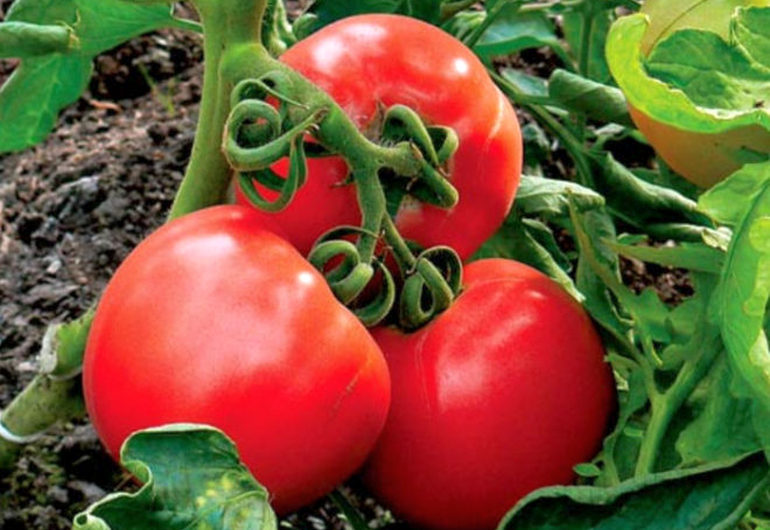Content:
Currently, there are many hybrid tomato varieties, which allows each gardener to choose a variety that has the desired color, shape variety and any other vegetable parameter. The shape of the ripe fruit of the eagle's beak tomato is notable for its resemblance to the head of a bird, which may explain the emergence of the name of this variety. Such tomatoes have become widely popular among summer residents, due to their high yield rates, versatility in the culinary field and the wonderful taste of ripe fruits.
Characteristics of the variety Eagle beak
Tomato Eagle's beak, the characteristic and description of the variety of which suggests that it is a Siberian breeding hybrid. Varietal tomato Eagle's beak is recommended for growing both in greenhouse conditions and in an open ridge. One bush of varietal tomatoes Eagle's beak is capable of producing approximately 8 kilograms of harvest.
Eagle's beak tomatoes are notable for their good frost resistance - even in a cool summer and a sharp drop in air temperature at night in the spring, the formation of ovaries and plant development will not stop. Full ripening of tomatoes has time to be completed by the end of the autumn season. A variety of this garden crop belongs to the category of medium-ripening vegetables. The plant is not capable of pollinating on its own. With a fine structure of the stem part of an indeterminate shrub, it is characterized by spreading. The landing grows to one and a half meters in length. Large bright green leaves have a standard shape, characteristic of most varieties of this fruit and vegetable crop. Inflorescences, as a rule, form around the tenth leaf.
The length of a plant planted in open ground is usually just over one meter. The intensive development of a shrub growing in closed greenhouse conditions leads to the fact that the tomato bush grows to a height of two meters.
The fruit setting period takes place from the beginning of the summer season to the end of the autumn season, due to which the harvest time is divided into two phases.
The elongated shape of the tomato is notable for the presence of a narrowing towards the top of the vegetable. The end of the fruit is elongated and slightly curved, making it look like an eagle's head. The varietal tomato that has just passed into the ripening stage is distinguished by a pink-colored peel and pulp. The color of the finally ripe vegetable becomes a dark raspberry hue.
The average fruit weight is 500 grams, but the first harvesting phase allows you to get individual vegetables weighing about a kilogram.
The sweet pulp of varietal tomatoes The Eagle's beak is distinguished by its fleshy and juicy consistency. A ripe plucked tomato has a minimum shelf life of a week.
The fruits of this fruit and vegetable crop are suitable for consumption freshly harvested and processed.
The following culinary products are made from sweet eagle beak tomatoes:
- salads;
- decorative design of dishes;
- juices;
- ketchups;
- tomato paste.
How to grow properly
Calibration and seed preparation
Very often summer residents purchase ready-made seedlings, however, experienced gardeners are in no hurry to resort to this method for two reasons:
- The risk of substituting the desired variety;
- Lack of information on the quality of the seed used.
Regardless of the method of obtaining seed planting material: by collecting from ripe fruits or purchasing at a specialized outlet, a calibration procedure is necessary.
How to calibrate yourself:
- The first stage of calibration involves manual bulkheading of seed, the purpose of which is to screen out small, broken and rotten seeds;
- Next, you should prepare a solution of salt, in which each copy of the future planting material should be immersed for 15 minutes;
- All the seeds that have surfaced are thrown out;
- After that, a 1% manganese solution is made, in which the seeds are subjected to an etching process;
- Next, the procedure for hardening the seed is carried out;
- The final stage is the transition to germination in a small flat plate under a damp cloth.
How to sow seed
Sowing eagle's beak tomatoes should be in March, provided that the seed treatment and germination procedures have been completed in advance. It is supposed to plant ready-made seedlings 60 days after sowing. As containers for sowing tomato bushes, it is necessary to prepare boxes. The soil taken from the summer cottage must go through the calcination procedure in the oven and be mixed with compost.
Sowing instructions:
- Fill the earth into the box;
- Moisten the soil;
- Mark 2 cm furrows on the surface;
- When creating grooves, adhere to centimeter depth;
- Spread the seeds every 2 centimeters;
- Cover with a thin layer of earth;
- Wet the surface using a spray gun;
- Close the boxes with foil.
How to properly care
Land taken from a summer cottage is usually used as soil for planting.
The soil must be sufficiently moist. Watering the plantings is necessary at least once a week.
Top dressing of the bushes with one of the suitable types of mineral fertilizers is carried out three times in one gardening season:
- Plantafol;
- "Kemira";
- ammonium sulfate.
Suitable materials for creating organic dressings are:
- vegetable peelings;
- shells from eggs;
- straw residues.
When the first inflorescences appear, it is necessary to stop feeding with nitrogen-containing fertilizers, since an excess of nitrogen can interfere with the formation of ovaries.
When forming shrubs, two stems must be left. The lower tier is cleared of foliage.
Thinning is necessary to free ripening fruits in order to provide access to sunlight. The time for the beginning of the formation of shrubs is July - this procedure takes no more than 10 days. A trellis is used as a garter support, which can be constructed by driving in support pillars from each edge and wrapping them with a rope or wire.
Eagle's beak tomatoes are susceptible to late blight. As a preventive measure against this disease, you can spray the planting with essence based on Bordeaux liquid. Treatment of fungal infections is carried out by treatment with the drug "Fitosporin".
To get rid of insect pests, you should use the following folk remedies:
- soap solution;
- celandine broth.
List of advantages and disadvantages
The positive properties of the Eagle Beak variety, which distinguish it from other tomatoes, are:
- high yield rate;
- excellent gastronomic characteristics;
- original appearance of the fruit;
- resistance to many diseases.
Negative qualities of the variety:
- insufficient height of the bushes with their abundant spreading;
- the need to strengthen the trellis;
- providing abundant watering;
- the need for regular feeding;
- tendency to damage by late blight;
- lack of immunity against diseases of fungal origin.
Tomato variety Eagle's beak can be called one of the most interesting varieties presented for cultivation by domestic breeders. The only disadvantages of this variety are considered only the requirements for care, however, with careful observance of all agronomic recommendations, you can get a rich harvest of sweet and juicy varietal tomatoes of an unusual shape - in the form of a bird's head, which is notable for each individual tomato.

